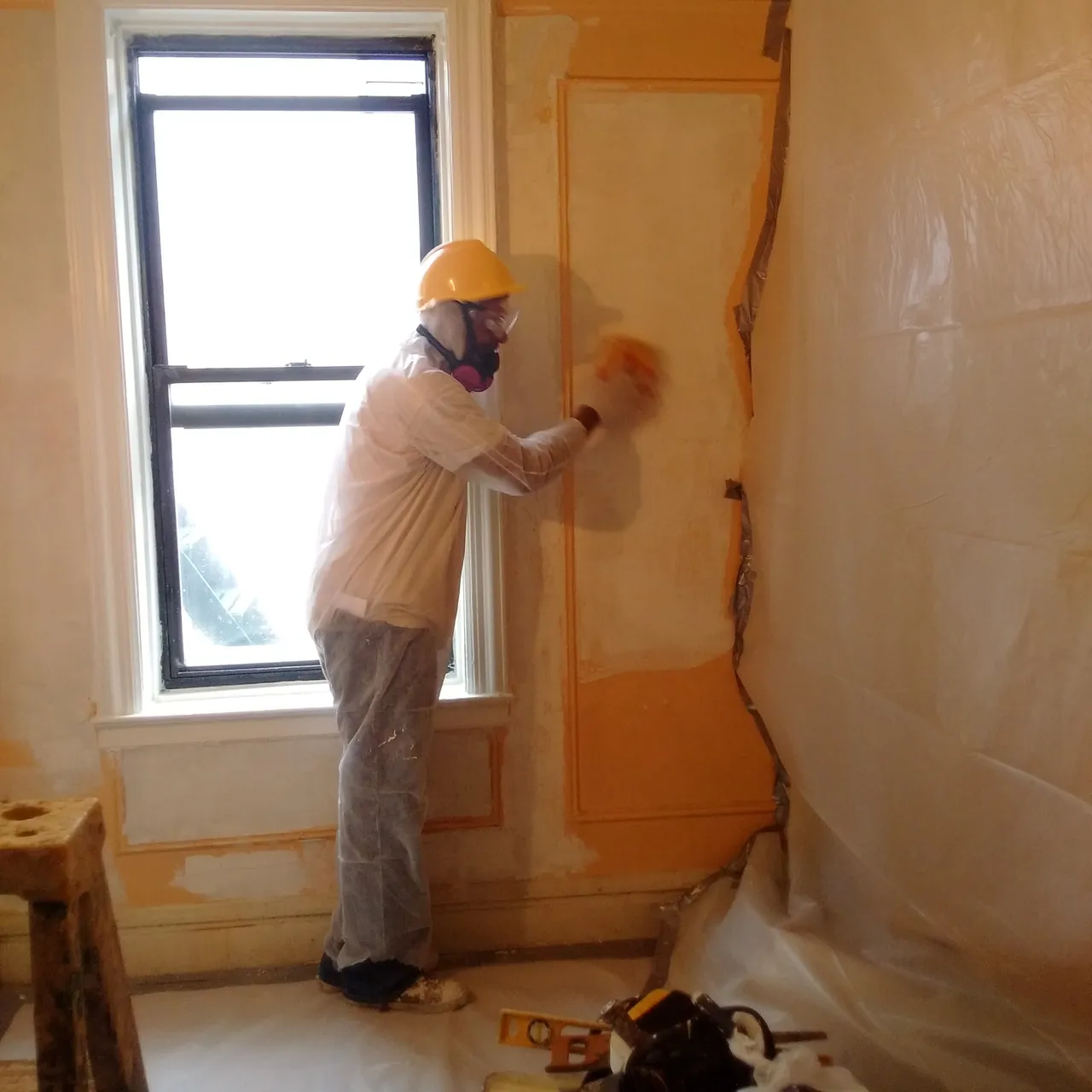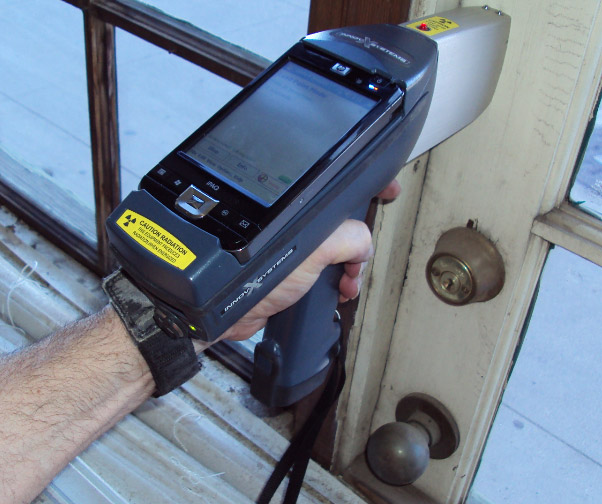Dependable DOH & HPD Lead Violation Removal in NYC-- Secure Your Property
Dependable DOH & HPD Lead Violation Removal in NYC-- Secure Your Property
Blog Article
Vital Tools and Strategies for Efficient Lead Offense Cleaning
Resolving lead offenses successfully requires an extensive method that blends the right devices with critical methods. The very first step involves outfitting workers with Personal Safety Devices (PPE) to protect their health. Simultaneously, making use of specialized cleanup devices, such as HEPA vacuum cleaners and lead-specific cleaner, is essential for comprehensive impurity elimination. Effective control techniques, including plastic bed linen and unfavorable air pressure systems, are necessary to stop the spread of dangerous products. Safe disposal techniques and stringent adherence to governing guidelines make certain accountable handling of poisonous waste. What are the nuanced methods that truly make a difference?
Individual Safety Tools
Personal protective equipment (PPE) is a vital element in the effective management of lead contamination cleanup. The essential PPE for lead cleanup consists of respirators, safety garments, handwear covers, and eye security.
Respirators, especially those geared up with HEPA filters, are essential for filtering air-borne lead fragments, stopping inhalation. Proper fit and seal checks are crucial to guarantee their performance. Protective clothing, consisting of coveralls and non reusable fits, prevents lead dirt from sticking to workers' garments, reducing the threat of additional contamination. Gloves, commonly constructed from nitrile or latex, protect the skin from straight call with lead, while safety goggles or full-face guards secure the eyes from dust and particles.
Furthermore, extensive training on the correct use and upkeep of PPE is important. Workers have to be educated on wearing and doffing procedures to avoid contamination. Normal evaluations and replacements of PPE elements are essential to keep their protective capabilities, guaranteeing a secure and certified cleaning operation.
Specialized Cleaning Equipment

An additional crucial tool is the wet/dry vacuum, which can efficiently cleanse up both dirt and fluid contaminants. These vacuum cleaners usually include HEPA filters to provide an added layer of safety. Wet wipes or tack cloths are additionally important for surface area cleansing; they are especially made to capture and hold lead bits, decreasing the risk of spreading out contamination.
For more persistent deposits, specialized lead-removal cleaner are required. These representatives are formulated to damage down lead fragments, making them simpler to eliminate. Scrub brushes with tough bristles can aid in this process, specifically on rough surface areas where lead dirt often tends to stick a lot more highly.
Additionally, encapsulants are used to secure lead-contaminated surfaces, stopping the release of lead dirt. These specialized paints and coverings are developed to stick to various substratums, giving a long-lasting service for lead control.
Reliable Control Approaches
Effective containment techniques are important in alleviating the spread of lead contamination throughout clean-up activities. Carrying out robust containment strategies ensures that lead bits do not migrate to unaffected areas, thereby securing both workers and the atmosphere. One primary approach is using plastic bed linen to seal polluted areas. Heavy-duty polyethylene barriers can be set up from flooring to ceiling to produce a regulated work area, significantly minimizing the danger of air-borne lead dirt dispersal.

To enhance containment, encapsulants can be used to surface areas that are not being gotten rid of or interrupted. These specialized coverings bind lead dust, reducing its accessibility for resuspension. Furthermore, all workers should use suitable Personal Safety Devices (PPE), consisting of respirators and non reusable fits, to avoid contamination spread.
Safe Disposal Practices
Making certain secure disposal methods is an important part in the administration of lead contamination cleanup. Appropriate disposal minimizes the risk of lead re-entering the environment and threatening public health. The very first step is to identify and segregate lead-contaminated waste from various other products. Safe and secure containment utilizing heavy-duty, leak-proof containers is necessary to stop spillage throughout transportation.
Moving lead waste requires adherence to rigorous standards. Utilizing certified contaminated materials carriers guarantees that the materials are taken care of sensibly. Paperwork, consisting of shows up describing the kind and quantity of waste, must go along with deliveries to track the waste from the site of beginning to its last disposal location.
Designated contaminated materials disposal centers are equipped to manage lead-contaminated products safely. These facilities frequently use innovative techniques such as stabilization, solidification, or chemical treatment to neutralize the lead before disposal. Landfilling in specialized, lined locations that prevent leachate from infecting groundwater is an usual technique for final disposal.
Routine training for personnel involved in lead garbage disposal is critical to keep security standards and prevent unintended direct exposure. By adhering to these practices, companies can substantially decrease the environmental and wellness effects associated with lead contamination.
Regulatory Conformity Tips

Sticking to governing compliance is paramount in the effective execution of lead contamination cleanup. Recognizing and complying with federal, state, and regional regulations makes certain not only the safety and security and health and wellness of individuals but also the lawful and financial wellness of the cleanup organization. The Epa (EPA) establishes rigid criteria, such as the Lead Restoration, Repair, and Painting (RRP) Regulation, which mandates proper qualification and training for professionals taking care of lead-based activities.
Compliance begins with a complete analysis of applicable legislations and guidelines. Organizations has to remain updated on any legislative modifications, which can be assisted in via normal training sessions and subscribing to industry updates. check my blog Documentation is one more vital conformity element; keeping thorough documents of all tasks, consisting of examination records, staff member training logs, and disposal shows up, is necessary.
Moreover, engaging with certified lead inspectors or risk assessors ensures that lead hazards are correctly identified and mitigated. Companies have to apply making use of Individual Safety Devices (PPE) and guarantee that safety protocols are look here purely adhered to. Transparent interaction with stakeholders, consisting of workers, clients, and governing bodies, will foster a society of compliance and accountability, inevitably contributing to a safer and extra effective lead cleanup procedure.
Final Thought
Efficient lead offense cleaning requires the integration of specialized devices and tactical approaches to make certain security and efficacy. Making use of HEPA vacuums, specialized cleaning representatives, and effective control techniques such as plastic bed linen and unfavorable air stress systems is imperative. Individual protective tools (PPE) safeguards employees from direct exposure, while risk-free disposal official site techniques and stringent adherence to governing compliance are crucial for responsibly taking care of contaminated materials. Jointly, these measures substantially mitigate wellness threats and add to a cleaner setting.
Report this page